The Seasonic PRIME Titanium PSU (650W, 750W, 850W) Review: Mythical Performance
by E. Fylladitakis on April 7, 2017 9:00 AM ESTExternal Appearance
The three Seasonic PRIME PSUs that we are reviewing today are almost identical physically, sharing the exact same design and proportions. One can only tell the difference between the models from either the sticker with the electrical specification of the PSU that is found at the top of the chassis, or from the number of connectors at the front side of the units. Do note that the chassis is 170 mm long, which is a bit longer than that of a typical ATX PSU and might be incompatible with some cases, especially ultra-compact designs.
Seasonic is trying to have the PRIME units aesthetically standing out of the crowd mainly by adding chrome parts on the sides and bottom of the chassis. Aesthetics are a subjective matter but we believe that the designer made the PRIME units a bit too shiny, when obviously the concept was to have them looking classy. The sides of the chassis are embossed, with a small vent opening that faces the rear of the unit. These vents are insignificantly small and their direction suggests that they are most likely just decorative elements rather than actual thermal improvements.
The rear side of the PSUs is perforated, with an elongated honeycomb pattern that has been optimized for reduced air drag (i.e. noise). There is a typical on/off switch next to the AC cable connection, and also a push button that turns the hybrid fan mode on or off. With the setting on, the fan will not start until the thermal control circuit defines that it is necessary for the cooling needs of the unit.
The front side of the PSUs are littered with the numerous connectors for their modular cables. Each unit has a different number of connectors that corresponds exactly to the number of cables they come with. The connectors are grouped into three categories; one just for the ATX cable, one for the Molex/SATA cables and one for the PCI-E and CPU cables. All of the PCI-E/CPU connectors are compatible with both of the CPU and PCI-E cables.
Internal Design
All three of the units that we are reviewing today are using the same exact fan, the Hong Hua HA13525M12F-Z. It initially appears to be a common 135 mm fan but has a fluid dynamic bearing (FDB) engine, which combines the low noise operation of the sleeve bearing with the longevity of ball bearing engines. The fan has a maximum rotational speed of 1800 RPM.
Seasonic is the designer and a manufacturer that actually also supplies their products to other brands, so there is no hidden OEM behind the PRIME Titanium units, they are entirely of their own design and production. The three PRIME Titanium units that we are reviewing today are also sharing the same exact internal design. As a matter of fact: many of the components are identical, with the only actual difference being the rating of some of the primary components. The heatsinks are identical, as are most of the secondary side capacitors.
The secondary capacitors are either supplied by Nippon Chemi-Con and Nichicon (Solid state), or Nippon Chemi-Con and Rubycon (electrolytic). The filtering stage also is identical between the three units and consists of six Y capacitors, three X capacitors and two filtering inductors. A surge suppressing MOV is also present. All three units are even using the same two primary conversion bridges, which are comically oversized for the power requirements for any of the three units. The two bridges in each of the units could, in theory, handle up to 4.5kW with a mere 90V AC input. Differences occur with the two APFC capacitors at the primary side: the 650W model is using 2×400V/470μF capacitors, the 750W model one uses 400V/450μF plus one 400V/560μF, and the 850W model uses one 400V/470μF plus one 400V/680μF.
Seasonic PRIME Titanium 650W - Internal View
Technologically, the topology of the PRIME units is not alien by any of today’s standards. The primary inversion stage is a full bridge supported by an LLC resonant converter, and the secondary conversion stage is a synchronous rectifier that generates the 12V line, with DC-to-DC circuits for the secondary voltage lines. Seasonic managed to reach 80Plus Titanium efficiency standards simply by the proper selection of high quality active parts that have minimal thermal losses and cooperate well with each other. The flip side of this is the cost, which we will get to later.
Seasonic PRIME Titanium 750W - Internal View
Seasonic PRIME Titanium 850W - Internal View


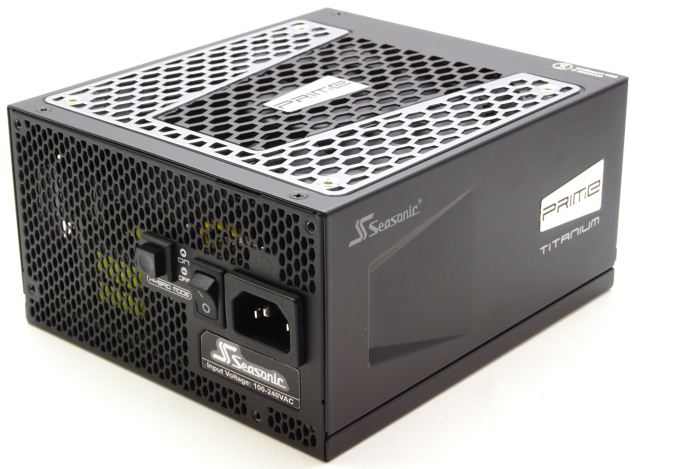
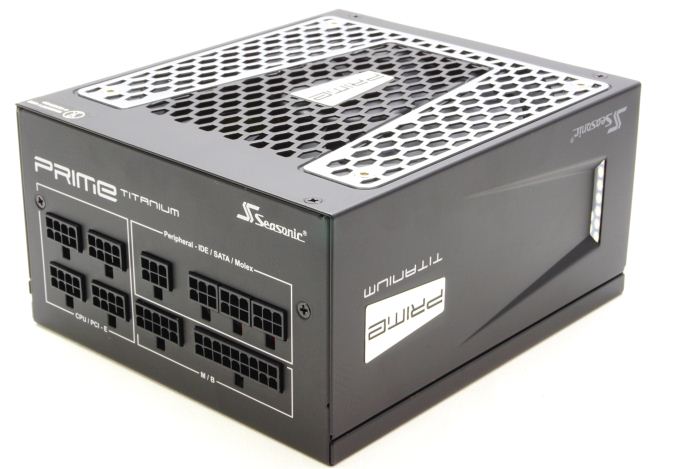
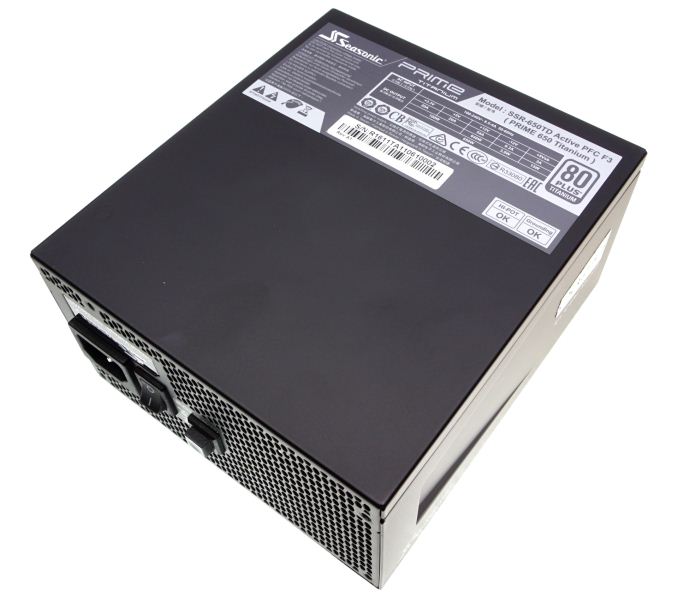

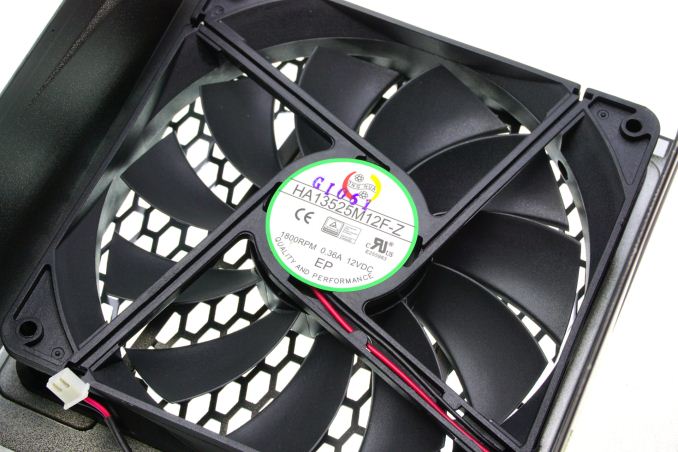
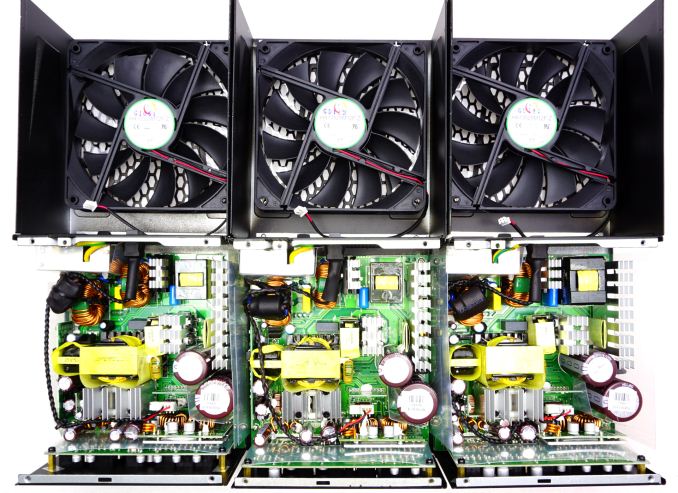
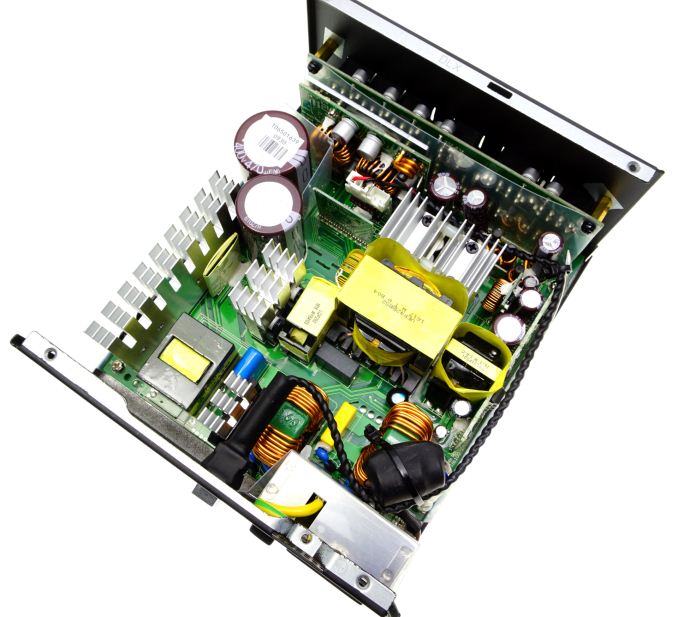
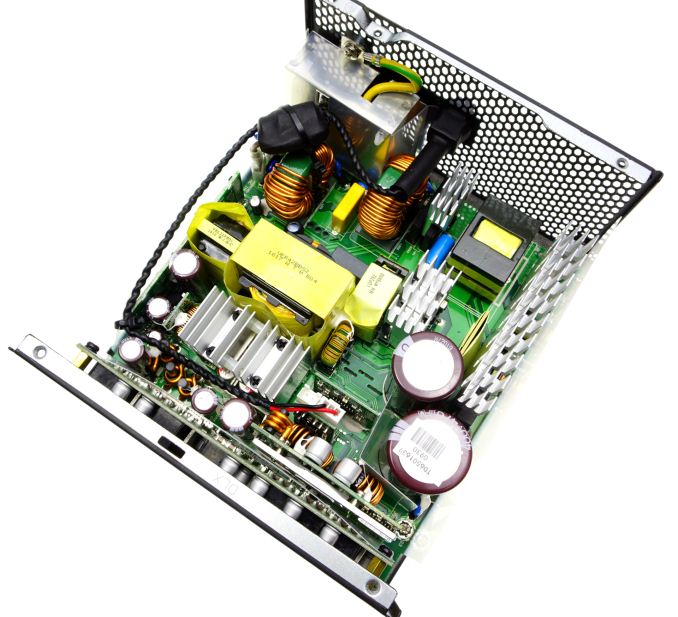
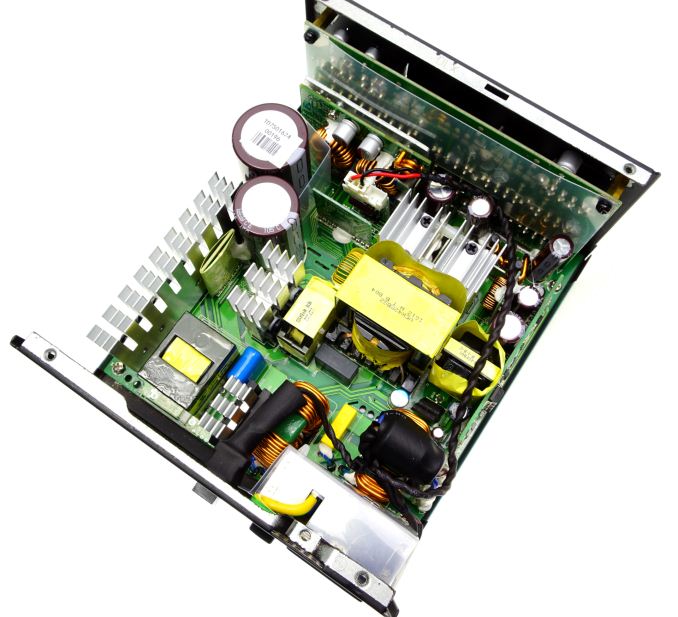
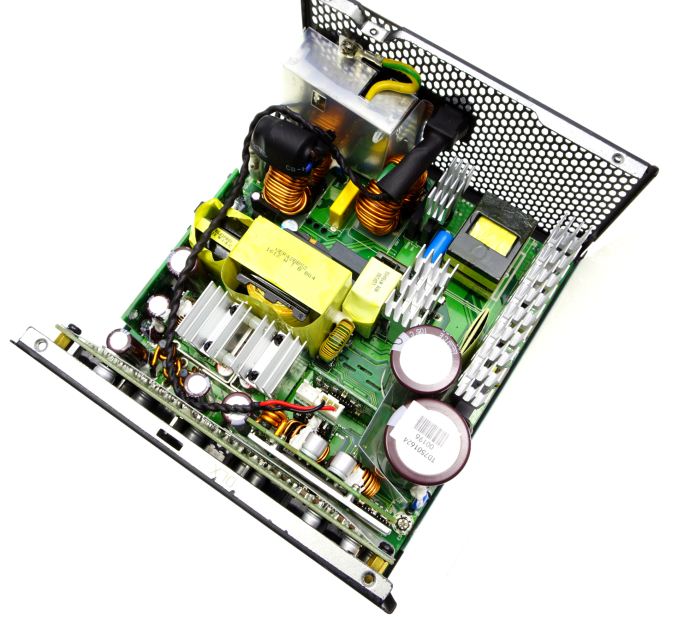
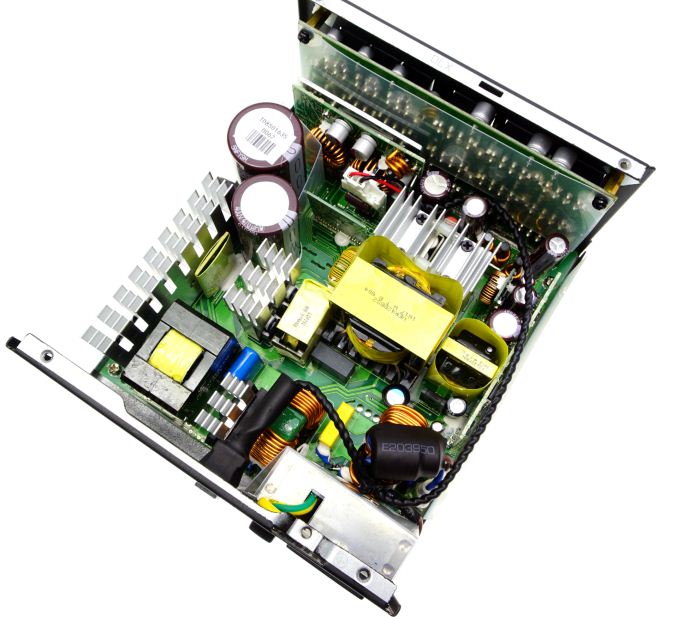
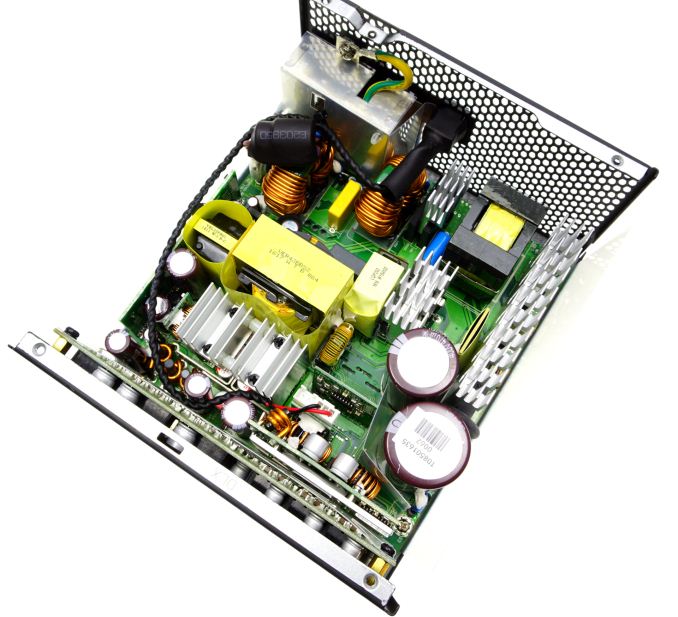








86 Comments
View All Comments
DanNeely - Saturday, April 8, 2017 - link
If Seasonic wanted to make a status connector to the mobo, they could just terminate it in a plug for a USB2 header like the one company currently making them is.EasyListening - Monday, April 10, 2017 - link
Does it do RGB?SkipPerk - Wednesday, May 3, 2017 - link
It does not do RGB because it is VR-ready!blahsaysblah - Sunday, April 9, 2017 - link
No, PS internals have gotten a lot better. The cabling/connectors have not kept up.As i went through the effort of having my latest PC have all custom power cables(not for looks), i researched quite a bit and than having done it(not just read/talk), the connectors and cabling can stand to get modernized quite a bit.
These connectors were designed for a time when the vision and landscape for PCs was very different. Everyone was going to have their own. Like how each house had multiple TVs. TV numbers have died off as the landscape has changed. So have PCs. The internals and toolings should match the new PC user. Grandma/pa/person who doesnt need it: they use smartphone/tablet/laptop. It's very much a power user.
status??? how about temperature, so you could have system fans do the heavy lifting? or give the OS a chance to do something about a bad situation?
Alexvrb - Tuesday, April 11, 2017 - link
OK, I get adding "status" output (even though it's a pretty dry and useless data stream to stare at if you have a PSU that's so rock solid it can run for a decade straight without twitching). But how exactly do you propose they "modernize" the cabling and connectors? Not even considering that changing connectors to a new standard for no good reason (other than to piss all over existing standards that work fine) seems silly, there's other issues too. Someone else mentioned it already but it bears repeating: if you reduce the number of wires, but you still need to carry the same amount of current, you MUST move to heavier gauge wires. That means thick, less flexible cabling that people would hate. Does that sound modern? What's the benefit? Are you a better engineer just waiting to show off your superior designs?Asryan - Wednesday, August 19, 2020 - link
I have the 850w but I'm experiencing gpu coil whine..I had read that this kind of coil whine is not dangerous for the devices , whether it is the power supply or the graphics card, could you confirm it to me.
What is weird is that the noise occurs at + 30FPS +, i've limited FPS to find out it does not occurs only at high fps as i was used to with coil whining GPU... I try to play with the sliders of MSI afterburner and I can hear that the sound changes .
After that I only hear it if the fans are at their lowest and the panel is open so if it is certain that it cannot harm my configuration, it is not very serious but I would like to be sure.
However I would like to understand because the problem arises with:
2 different graphics cards (EVGA FTW3 2080ti and Asus Strix 2080ti Oc that someone gave me for test purposes). The two cards do not make this noise in another config
2 power supplies of the same model (Seasonic Ultra Prime titanium 850w)
2 motherboards of the same model. Asus Maximus Hero XI
Cstate on and off
Mod cable cables or original cable
it's driving me crazy mostly because I don't understand WHY but I'm pretty sure it's psu related..
bill.rookard - Friday, April 7, 2017 - link
I have to say, I'm absolutely blown away by the quality of the power coming out of those units. The ripple figures are insane (in a good way!). Considering that I'm looking for a new PSU - this may be 'the one' even at a $160-180 price tag.helvete - Friday, June 16, 2017 - link
Exactly. shame they don't offer some 400 - 450W variant.Shadowmaster625 - Friday, April 7, 2017 - link
It is nice to know that if you pay an extra $70 for a power supply, namely a whopping $4-10 a year in electricity savings! Boy, high efficiency sure does pay for itself dont it?Phiro69 - Friday, April 7, 2017 - link
Written like a true Republican.